Introduction
Autism spectrum disorder (ASD) is a complex neurodevelopmental condition characterized by atypical sensory processing. For individuals with autism, sensory experiences can be overwhelming or challenging to respond to, impacting behavior, learning, and overall development. Understanding and addressing these sensory challenges is crucial for supporting the well-being of individuals with autism.
This article explores the different types of sensory processing differences in autism, the creation of sensory-friendly environments, the use of sensory tools and techniques for support, embedding sensory strategies into the classroom, successful implementation of sensory strategies through case examples, and the role of occupational therapists in sensory support. By adopting tailored strategies and designing inclusive environments, we can empower individuals with autism to navigate their sensory world more comfortably and thrive in all aspects of their lives.
What is Sensory Processing in Autism?
Autism spectrum disorder (ASD) is a complex neurodevelopmental condition, and one of its most pervasive features is atypical processing. This covers a wide range of experiences where people may find themselves overly sensitive to certain stimuli, making everyday environments feel overwhelming, while others may be under sensitive, making it difficult to respond to information that others easily perceive. For individuals with a unique neurodevelopmental condition, the processing of environmental stimuli plays a crucial role in successfully interacting with their surroundings, influencing their actions, acquisition of knowledge, and overall growth.
For example, the sensation of a dental chair might be intolerable for some, while the auditory and physical vibrations of a dental drill could cause significant distress in others. Innovative approaches, like an AR application designed to translate tactile feedback into visual and auditory signals, have been developed to assist individuals with a specific neurological condition by aligning with their unique sensory preferences—highlighting the importance of personalized interventions.
Furthermore, ongoing research enhances our comprehension of processing challenges related to the autistic spectrum. A recent study using machine learning, called 'AutMedAI', effectively identified about 80% of children by analyzing a range of parameters. This demonstrates the potential of technology in aiding early diagnosis and intervention.
Recognizing the challenges related to the senses in individuals diagnosed with ASD is not solely about acknowledging the difficulties they face. It's about recognizing their distinct sensory experiences and adapting our support to their specific needs. By understanding the complexities of the tactile, proprioceptive, and vestibular systems, we can provide more efficient strategies to support individuals with ASD in their surroundings—whether it be their residence, educational institution, or professional setting.
The occurrence of a developmental disorder is increasing, presently approximated to impact 1 in 44 children, with a prominent gender bias towards males. As we continue to explore the unique cognitive profiles of individuals with autism, including differences in processing sensory information, it is crucial for healthcare providers in all specialties to be aware of the specialized care required to support the mental and physical health of individuals on the autism spectrum. With this knowledge, we can work towards enhancing healthcare access, quality, and outcomes for individuals with ASD.
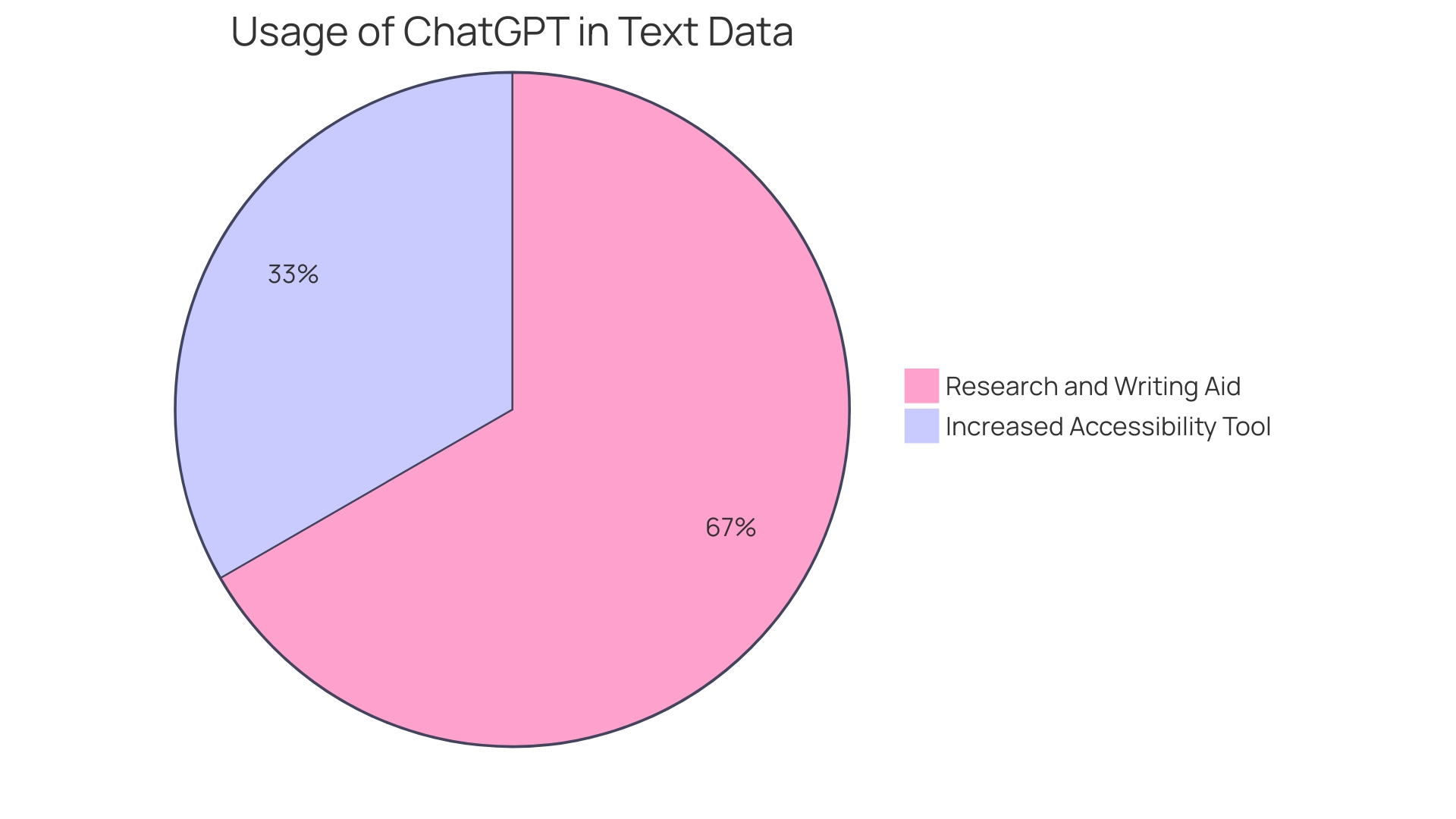
Types of Sensory Processing Differences in Autism
Individuals with autism can exhibit a wide range of processing differences, impacting how they perceive and interact with the world around them. Sensory hypersensitivity, or over-responsiveness, can make everyday environments challenging; the buzz of fluorescent lights or the touch of certain fabrics, for instance, might be intensely uncomfortable. On the flip side, hyposensitivity, or under-responsiveness, may indicate that these individuals seek additional input from their senses to feel comfortable, which can be observed as a preference for strong flavors or the need for deep pressure. Combining these perceptual encounters can be overpowering, and comprehending the equilibrium of heightened sensitivity and reduced sensitivity is vital, as the majority of people will encounter a mix of both. This intricate perceptual landscape can influence behavior, learning, and overall growth, making it crucial to offer nuanced support customized to each individual's distinctive perceptual profile.
Creating a Sensory-Friendly Environment
Developing an environment that meets the needs of individuals with autism is not only about comfort; it's about designing spaces that enable them to interact with their surroundings positively. It's crucial to take into account factors like lighting, acoustics, and spatial sequencing to support regulation of the senses and minimize stress or overload of the senses. For example, choosing LED lights that do not flicker can significantly reduce visual stress for those with sensitivities to light. Acoustics play a pivotal role as well; as noted by experts, managing noise levels is critical, and this can be achieved through sound-absorbing materials and thoughtful spatial design.
Visual clutter can be overwhelming, so creating clear and organized spaces helps reduce anxiety. The arrangement of furniture and materials that stimulate the senses should encourage ease of movement and provide a sense of order. Moreover, integrating biophilic design elements such as natural light and plants can create direct perceptual encounters that promote a connection with nature, which has been demonstrated to enhance the quality of life for neurodivergent individuals.
Recognizing that processing issues related to the senses are highly personalized, it's crucial to customize each setting to meet the distinct requirements of the individual. By integrating these strategies thoughtfully, we can design environments that not only accommodate sensitivities related to perception but also promote an enhanced sense of well-being for individuals on the autism spectrum.
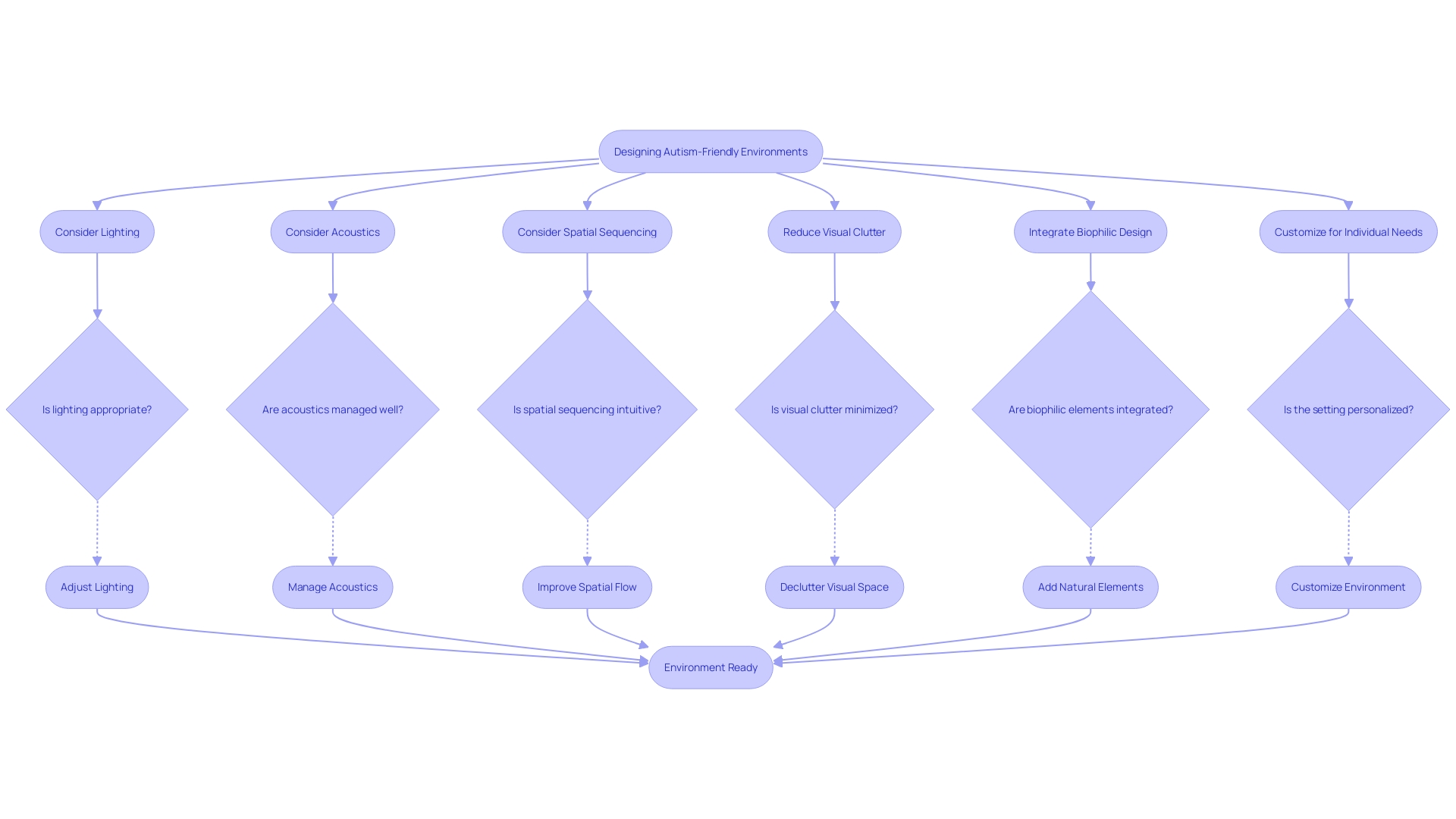
Sensory Tools and Techniques for Support
Navigating the world with a developmental disorder involves distinctive challenges, especially when it comes to processing information from the senses. The tactile, proprioceptive, and vestibular systems, which govern touch, body awareness, and balance, may be tuned differently for those with a specific condition. This variation can lead to processing difficulties, causing hypersensitivity or hyposensitivity to environmental stimuli, such as sights, sounds, and smells.
For individuals on the autism spectrum, managing these sensitivities is crucial, and tools and techniques related to the senses are integral to achieving regulation. For instance, weighted blankets offer comforting pressure, fidget toys provide a tactile distraction, and bins for exploration allow for play. These tools can soothe hypersensitivities and stimulate senses that may be under-responsive.
Furthermore, integrating soothing activities and integration exercises into daily routines can greatly enhance well-being. These practices may involve guided interactions with rich stimuli, helping to gradually build tolerance and integrate experiences.
Advanced solutions, such as an AR application designed to translate tactile sensations into visual and auditory stimuli, also exhibit the innovation driven by the need to support those with autism. This technology acknowledges the heightened sensitivity to touch prevalent in the autistic community and leverages their relative comfort with visual and sound cues to facilitate better experiences, as evidenced in the context of a dental visit.
The Autism ASPECTSS Design Index highlights the significance of taking into account the sensitivities related to the senses in constructed settings, giving emphasis to acoustics and spatial sequencing. Reducing noise and designing spaces that are navigable and predictable can help alleviate overload of the senses.
Research underscores the significance of early and effective interventions. Organizations like The Autism Community in Action (TACA) and NeuroQure are taking steps to provide support as early as possible, recognizing the positive outcomes associated with timely intervention.
In summary, through thoughtful selection of tools and techniques that align with unique needs and sensitivities, and by designing environments that adhere to principles of being conducive to sensory needs, we can provide support for individuals with autism in navigating their sensory world more comfortably.
Embedding Sensory Strategies into the Classroom
Establishing an environment that caters to the needs of students with autism is vital for their comfort and success in the classroom. The Autism ASPECTSS Design Index guides educators in crafting such spaces with a focus on acoustic management to mitigate distress caused by noise, a common challenge highlighted by individuals on the spectrum. Spatial sequencing, another criterion from the Index, emphasizes designing classrooms that are not only functional but also intuitively navigable for autistic students.
Strategies can be seamlessly integrated into classroom settings by establishing dedicated corners, which serve as safe havens for students to regroup and recalibrate their senses. Visual schedules contribute to a structured environment, reducing anxiety and helping students anticipate upcoming activities. Regular breaks for the senses and the utilization of materials that are friendly to the senses meet specific requirements, whether it is a plush rug to reduce overpowering stimuli or tools that offer feedback related to body awareness.
Innovative solutions like an Augmented Reality (AR) application, designed to translate tactile sensations into visual and auditory signals, demonstrate the potential of technology in supporting students with tactile sensitivities. This approach aligns with the understanding that individuals on the spectrum of autism often have heightened responses to touch while finding comfort in visual and auditory stimuli.
The educational series on processing and developmental disorders further highlights the significance of comprehending how processing issues impact behavior, development, and learning. It offers practical strategies for assistance, recognizing the distinct experiences of autistic individuals in relation to their tactile, proprioceptive, and vestibular systems.
Strategies such as the '5, 4, 3, 2, 1' coping technique are also valuable tools for educators. This technique helps students manage anxiety and can be implemented at any point during the school day to assist in grounding and centering overwhelmed students.
These approaches are not only endorsed by educational specialists but also by the lived experiences of individuals on the autism spectrum, like Dr. Temple Grandin, who emphasize the importance of sensory-friendly environments. For instance, guaranteeing the utilization of non-flickering LED lights can make a noteworthy difference in reducing overload.
By implementing these diverse approaches and recognizing the significance of embodied cognition, teachers can design a classroom experience that values and addresses the varied sensory needs of students on the autism spectrum, promoting an inclusive and fruitful learning environment.
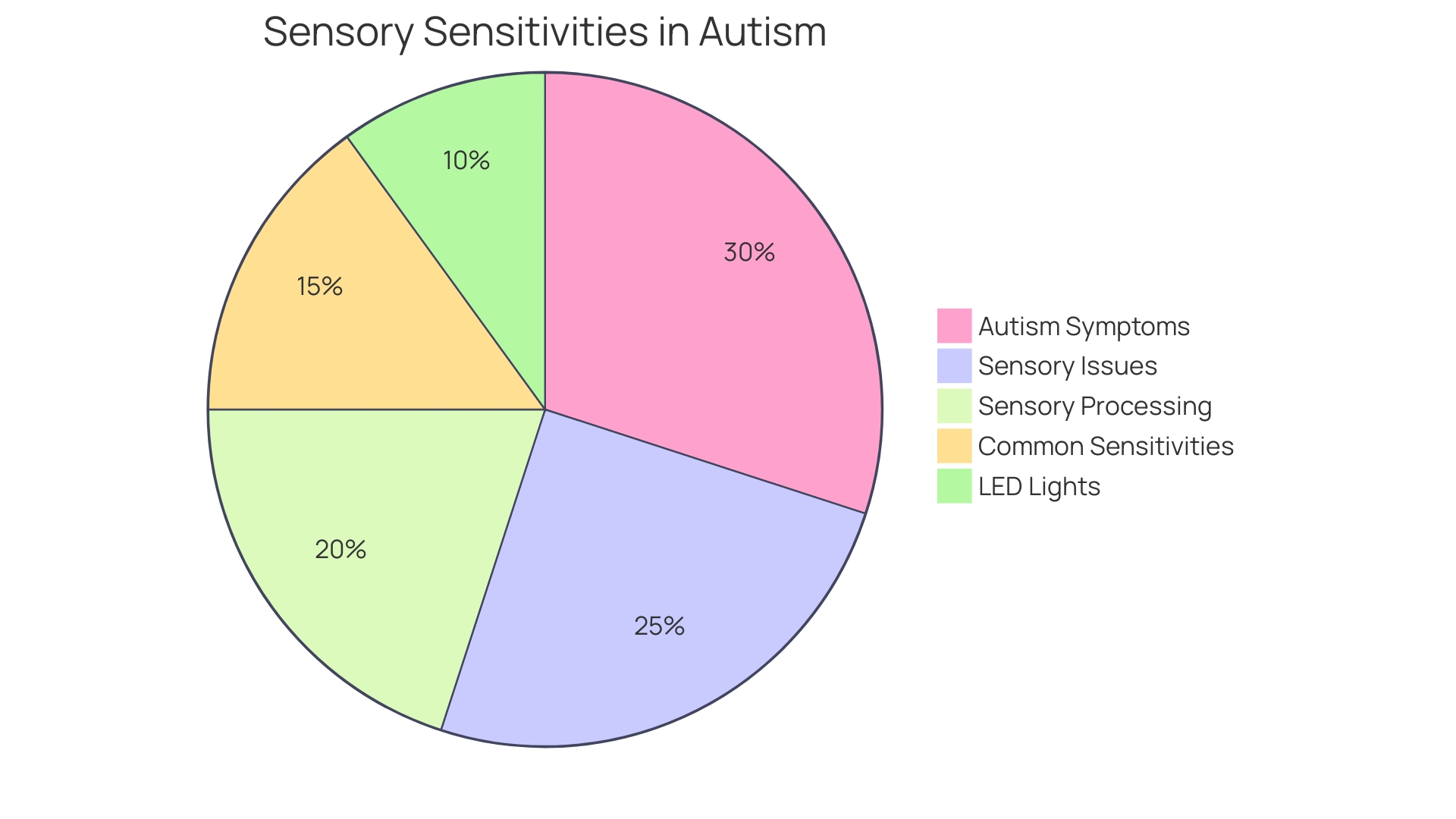
Case Examples: Successful Implementation of Sensory Strategies
Discovering the realm of strategies for individuals with autism can be a life-changing experience, not only for the individuals themselves but also for their families and caregivers. Through the lens of real-life stories, we get to see the profound impact that personalized perceptual strategies can have. For example, the creativity behind an Augmented Reality (AR) application created for dental visits is proof of customized support. This application transforms tactile sensations into visual and auditory stimuli, catering to those who find comfort in such sensory inputs.
Case studies also shed light on the importance of peaceful and supported participation in all areas of life, as emphasized by the late Dr. David (Dan) R. Offord. His vision of a just competition for all children, including those with disabilities, resonates in the efforts to establish equal settings. Such settings acknowledge the challenges faced by children with autism spectrum disorder, particularly when accompanied by emotional and behavioral problems, and strive to foster inclusion in schools and communities.
The Autism Community in Action's (TACA) commitment to early intervention aligns with these values. Their efforts underscore the significance of timely and accurate diagnoses, which enable effective support and treatment. Similarly, the Autism ASPECTSS Design Index introduces criteria like acoustics and spatial sequencing to guide the creation of autism-friendly spaces. The perspectives of specialists such as Dr. Temple Grandin and architect Magda Mustafa further clarify the multisensory intricacies of neurodiversity and architecture, providing practical advice for creating supportive learning environments.
While the research landscape on non-pharmacological interventions for individuals with the condition continues to evolve, it is paramount to critically evaluate these interventions for their effectiveness and potential impact. By grasping the real-life applications and the ongoing research, parents, professionals, and advocates can better navigate the sensory domain of individuals with autism and champion the well-being of these individuals in every aspect of their lives.
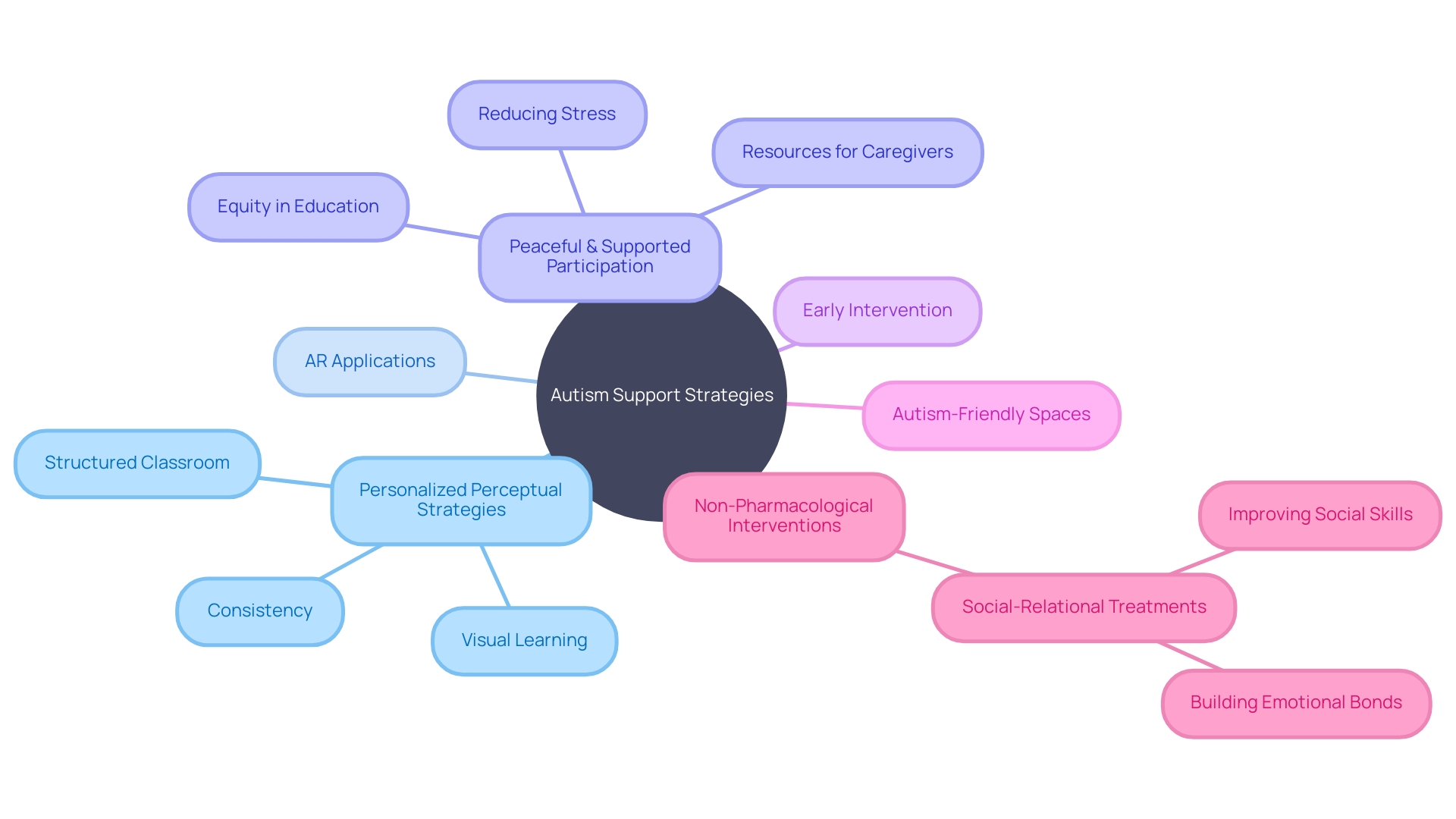
Minimizing Sensory Triggers and Providing Sensory Breaks
Understanding processing issues in people with autism is essential for creating supportive environments. These people may have increased sensitivities to everyday stimuli, which can be overwhelming and impact their behavior, growth, and education. Autistic individuals often grapple with a complex mix of both hypersensitivity and hyposensitivity to stimuli such as sights, sounds, tastes, smells, balance, touch, and even awareness of body position and internal sensations.
To assist in their regulation of the senses, it's imperative to identify particular triggers that may cause discomfort or overwhelm. This nuanced understanding allows for the design of personalized strategies to minimize the impact of these triggers. For instance, an innovative Augmented Reality (AR) application was prototyped to transform tactile feedback into visual and auditory signals, catering to the autistic community's preference for these types of stimuli over touch, especially in high-stress environments like dental offices.
Moreover, incorporating regular breaks for the senses into their routine can offer people with autism crucial opportunities to regulate themselves and recharge. These breaks are not just pauses but are strategic moments that provide relief from overload, enabling better management of experiences.
By actively addressing these perceptual difficulties, parents, caregivers, and professionals can greatly contribute to the well-being and fair involvement of autistic people in all areas of life. It's a step towards making the race fair, as the late Dr. David Offord emphasized, ensuring that every individual, regardless of their perceptual sensitivities, has the opportunity to engage, learn, and thrive in a supportive society.
Offering Choice and Control Over Sensory Experiences
Individuals with autism spectrum disorder (ASD) often encounter distinct difficulties when it comes to processing sensations. Sensory sensitivities can manifest as either hypersensitivity or hyposensitivity, affecting various senses such as sight, sound, taste, smell, balance, and touch. To empower individuals with ASD to regulate their sensory requirements, it's crucial to provide them with choices and control over their surroundings.
One innovative approach includes the use of augmented reality (AR) applications that transform tactile sensations into visual and auditory signals, catering to the autistic community's preferences for certain stimuli. For example, during a dental visit, a patient might be distressed by the texture of the chair or the vibration of a drill. An AR application can relieve this discomfort by offering alternative feedback that the person finds more tolerable.
Highlighting independence and self-expression, permitting people to select favored tools for their senses, or engaging them in developing environments that accommodate sensory needs can greatly improve their capacity to handle challenging circumstances. Such strategies are not only practical but also support the development of valuable life skills.
Additionally, recent studies highlight the necessity for a shift in research perspectives to better align with the priorities of the autistic community, recognizing autism as a combination of strengths and needs that vary across contexts. Recognizing the intricacy of perceptual challenges and the significance of personalized assistance, renowned experts in the field offer online educational programs featuring effective approaches to aid individuals with ASD in diverse environments.
By integrating these tailored strategies and understanding the pivotal moments that can trigger discomfort related to the senses, we can create more inclusive and supportive environments that respect and respond to the diverse experiences of individuals with ASD.
Role of Occupational Therapists in Sensory Support
Comprehending the nuanced requirements of people with autism is crucial in tailoring appropriate interventions. Occupational therapists (OTs) are instrumental in this process. They evaluate sensitivities related to the senses and create personalized strategies that may involve creative approaches like utilizing augmented reality (AR) applications to convert tactile experiences into visual and auditory data. This method is especially advantageous for people who are overly sensitive to touch but have a stronger response to visual or auditory stimuli.
For example, consider the dental visit of an autistic person, where tactile sensations like the texture of the chair or the vibration of dental tools can be overwhelming. An AR application can alleviate these stressors by providing alternative input that is more tolerable, demonstrating how OTs can leverage technology to enhance experiences.
Sensory issues in ASD spectrum disorder occur in different ways, with people experiencing a combination of oversensitivity and under sensitivity to stimuli like sights, sounds, tastes, smells, and touch. Understanding what these perceptual challenges feel like is crucial for parents and educators in supporting their development.
Collaboration is key in this endeavor. Occupational therapists collaborate closely with parents, educators, and people with sensory integration needs to guarantee a holistic approach to sensory integration. This partnership is reflected in programs like Microsoft's neurodiversity hiring initiative, which has successfully integrated around 300 neurodivergent employees by accommodating their unique needs during the recruitment process.
The impact of these collaborative efforts is profound. As occupational therapist Ione Georgakis puts it, OT is about supporting people to lead a meaningful life, encompassing productivity, leisure, and self-care. The profession aims not only to provide practical assistance but to empower people with autism to flourish in their environments.
Data discloses the importance of addressing processing issues and barriers to employment for persons on the autism spectrum. With only 3 in 10 working-age autistic people employed, there is a considerable employment gap compared to people without disabilities. Initiatives are underway to improve this, with reviews seeking to enhance recruitment, retention, and development strategies for autistic talent.
By comprehending and addressing the challenges related to perception experienced by individuals on the spectrum, OTs play a pivotal role in helping them navigate daily life and find fulfillment in the workplace.
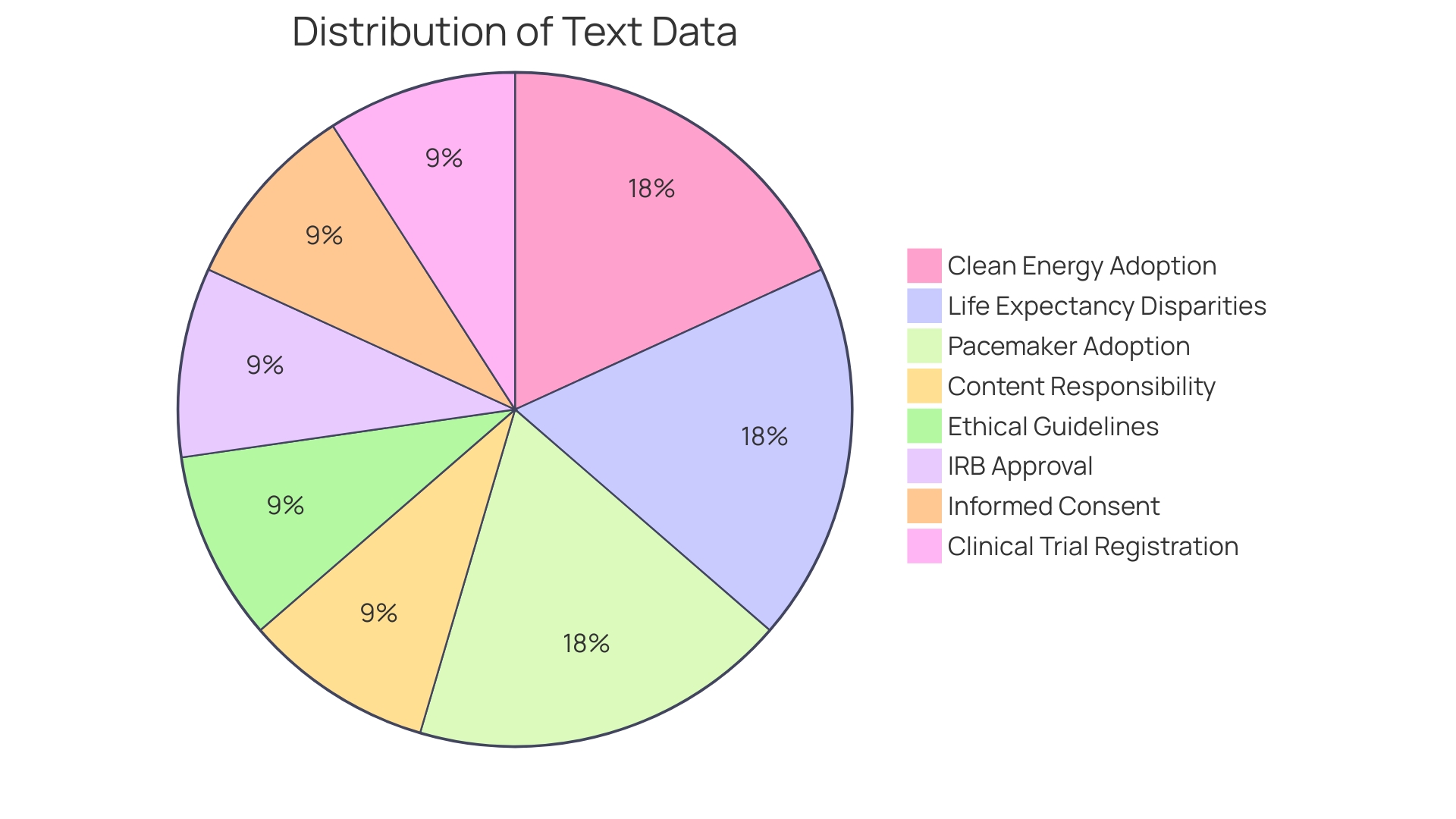
Common Sensory Challenges and Solutions
Comprehending processing issues is vital for individuals with a condition, as these difficulties can greatly affect their everyday experiences. Processing challenges frequently result in hypersensitivity, where specific stimuli are perceived as overwhelming, or hyposensitivity, where input may be muted or require enhancement to be detected. This can affect various senses, including sight, sound, taste, smell, balance, touch, and the awareness of body position and movement. Additionally, internal body cues and sensations might be perceived differently, making everyday experiences challenging.
To assist individuals with ASD in managing processing issues related to the senses, it's crucial to adopt practical strategies. For example, creative approaches such as the creation of an Augmented Reality (AR) application, which transforms tactile feedback into visual and auditory signals, demonstrates potential in aiding people who are more sensitive to touch but can process visual and sound stimuli more effectively. Such solutions can be tailored to specific moments of discomfort, such as during a dental visit, by addressing the patient's tactile sensitivity at various stages.
Furthermore, educational resources, such as online learning series led by autism specialists, can offer families and professionals with a deeper comprehension of processing and autism. These resources provide valuable approaches to effectively support people with autism at home, in the classroom, or in the workplace. By participating in live webinars or streaming recordings, parents and professionals can gain personalized advice and employ practical solutions to facilitate exploration, engagement, and integration.
As we aim to create supportive environments for neurodivergent individuals, it's vital to identify specific triggers that may cause discomfort or overwhelm. This proactive identification allows for the development of coping strategies to minimize the impact of these triggers in various settings, from open spaces to social interactions.
Empirical evidence highlights the significance of addressing sensory processing issues in individuals with neurodevelopmental conditions. Statistics reveal that about 1 in 70 individuals in the UK has autism spectrum disorder, highlighting the prevalence of this condition within the population. However, the employment rates for people on the autism spectrum remain disproportionately low, with only about 3 in 10 autistic individuals of working age in employment. This disparity underscores the need for greater awareness and the implementation of initiatives to improve understanding and support for neurodiverse employees in the workplace.
Ultimately, by acknowledging the distinct sensory experiences of those with a certain condition and providing supportive techniques, we can contribute to a more inclusive society where individuals with neurodivergence can flourish. It's essential to approach autism not as a negative diagnosis but as a different perspective that enriches our world. As parents and advocates, ensuring our children view their neurodiversity positively is a responsibility we must embrace with compassion and dedication.
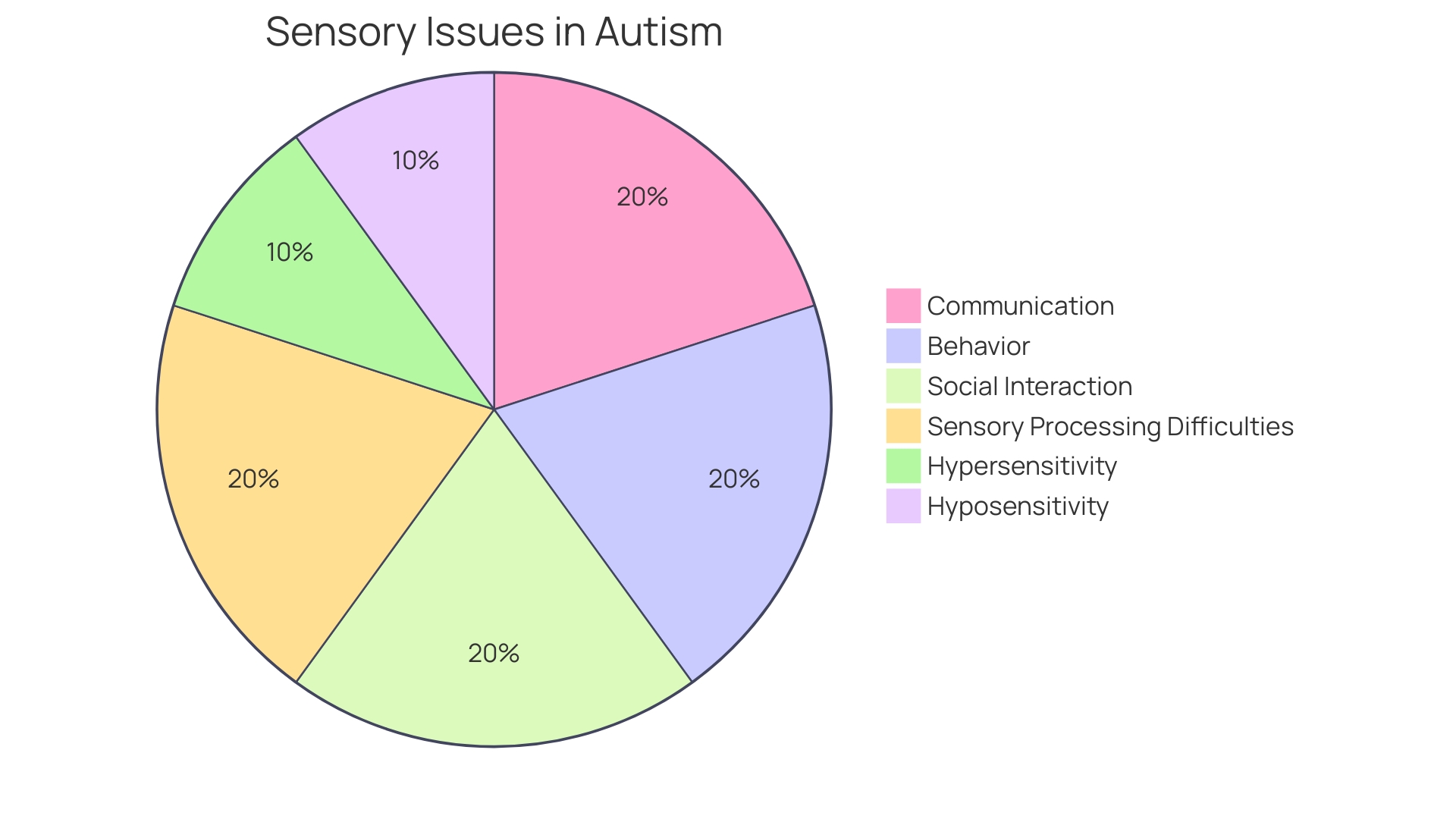
Conclusion
In conclusion, understanding and addressing sensory challenges in individuals with autism is vital for their well-being and development. Creating sensory-friendly environments, incorporating sensory tools and techniques, embedding sensory strategies into the classroom, and involving occupational therapists are key factors in supporting individuals with autism.
By considering factors like lighting, acoustics, and spatial design, we can create inclusive spaces that cater to individual sensory needs. Sensory tools such as weighted blankets and fidget toys, along with sensory integration exercises, can provide comfort and stimulation. Embedding sensory strategies in the classroom, such as sensory corners and visual schedules, promotes an inclusive learning environment.
Real-life case examples demonstrate the successful implementation of personalized sensory strategies, such as augmented reality (AR) applications. Early intervention and accurate diagnoses are crucial for effective support and treatment.
Collaboration between occupational therapists, parents, educators, and individuals with autism is essential for comprehensive sensory support. By understanding sensory triggers, offering choices and control over sensory experiences, and providing sensory breaks, we empower individuals with autism to manage their sensory needs and develop valuable life skills.
Addressing sensory processing issues and creating supportive environments contributes to equitable participation and better outcomes for individuals with autism. By adopting tailored strategies, creating inclusive environments, and collaborating with professionals, parents, and educators, we can empower individuals with autism to thrive in all aspects of their lives.
Discover effective sensory strategies to create an inclusive classroom environment.




